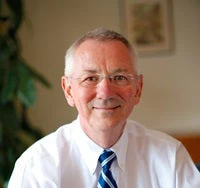I just flew in to Cancun this afternoon. The sun’s shining. The sea is blue. The Moon Palace – the site of the negotiations – is a beautiful resort with its own one-kilometer white sandy beach. Jackets and ties are discouraged, and many delegates are wearing the traditional Mexican guayaberas.
The Mexican hosts have done an outstanding job –in diplomacy and logistics – in preparing for this event. So why do the tourists look like they’re having a better time than the delegates?
 Because nobody knows how this will turn out. Everybody feels that somebody else should be putting more on the table, and some are expressing this with great emotion. The excitement of a possible deal last year in Copenhagen is gone. There is no home run, slam dunk or hole in one in the offing. The analogy is now from American Football: It’s about moving the ball patiently down the field with the hope of an eventual touchdown next year, the one after, or five years from now. Above all, don’t drop the ball, or we could lose ground fast.
Because nobody knows how this will turn out. Everybody feels that somebody else should be putting more on the table, and some are expressing this with great emotion. The excitement of a possible deal last year in Copenhagen is gone. There is no home run, slam dunk or hole in one in the offing. The analogy is now from American Football: It’s about moving the ball patiently down the field with the hope of an eventual touchdown next year, the one after, or five years from now. Above all, don’t drop the ball, or we could lose ground fast.
But this cautious view short-changes what Cancun should achieve. The package of decisions that is being negotiated is highly consequential, and could significantly improve the prospects of a pro-poor climate-friendly future.
So, what would success look like at the end of this 12 day marathon? By the end of this meeting we could have the following:
1. Forests: The first globally agreed REDD+ partnership providing sufficient funding for investments, performance-based payments, and readiness for future carbon market inclusion – thus ensuring that forests are more valued alive than dead.
2. Adaptation: A framework for ensuring the fair and adequate allocation of resources for climate resilient growth, with special attention to the most vulnerable countries, and a process for ensuring lesson learning and technical assistance on this urgent agenda.
3. Agriculture and soil carbon: Endorsement of a plan of action to move towards climate-smart agriculture, including a commitment to invest in programs that provide the triple win of higher yields, greater resilience to climate change, and increased carbon sequestration in the soil – so that agriculture moves from problem to solution.
4. Fast start finance: Clarity that the US$30 billion over three years that was promised last year in Copenhagen is being delivered, and a recommitment by industrial countries to deliver on this promise, despite the current extreme fiscal constraints.
5. The new Green Fund: Agreement on design principles for the new Green Fund, including governance structure and basic architecture, with an emphasis on results, efficiency, and leverage – and a process to take forward the detailed design in the coming months.
6. Carbon market extension and reform: Decisions that would reduce the high costs and inefficiencies of the existing Clean Development Mechanism (CDM) market, including moving towards more programmatic approaches, and clear signals on the continuations of carbon markets post-2012. Clarity on the process for gradual inclusion of forests and agriculture in carbon markets, thus extending the benefits to Africa and other low income regions.
7. Technology development and transfer: Agreement to create and finance a network of regional and country centers for the promotion of technology transfer, adaptation, and diffusion.
8. Special consideration for small islands, Africa and mountainous countries: Agreement that the most vulnerable countries and regions should be recognized as such in the design of programs and the allocation of funds for adaptation, and also for key elements of mitigation, such as renewable energy, which is particularly attractive in many of these countries.
9. Private sector: Agreements and ideas for harnessing the resources and skills of the private sector for low carbon development, and for leveraging the impact of public funds through innovative partnerships.
10. Green growth: Increased impetus towards low carbon investment at scale in both developed and developing countries. Important analysis has recently been completed on low carbon growth, and a number of developing countries have recently launched impressive programs, with finance from the Climate Investment Funds and other sources. These are providing a powerful illustration that green growth can improve competitiveness, deepen technological know-how, and extend access to energy and other services to poor households.
None of this is assured by any means. In order to unlock the possibility of such a package, flexibility and good faith will need to be shown on a number of technical and sensitive issues such as legal form, the future of the Kyoto Protocol, and MRV (Monitoring, Reporting and Verification). This will require trust, and inspiration.
Why is the World Bank active here in Cancun? Because we believe that these 10 deliverables can make a true difference in the lives of hundreds of millions of poor people in the near term, and together with deeper commitments over time on mitigation, this can be a game changer. We are working in each of these areas, and here in Cancun we will be seeking to influence the debate by showing how in each of these areas success is possible, and indeed is already evident in many places throughout the developing world.
Going into Copenhagen last year, expectations were much too high. This year here in Cancun, they are too low.


Join the Conversation